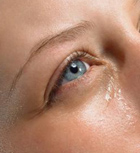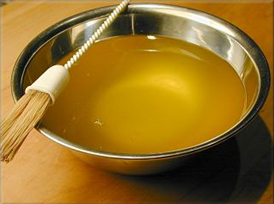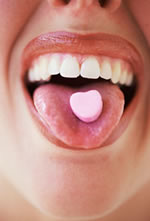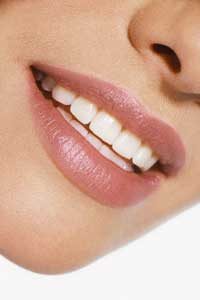Inhalation: Techniques
 Inhalation is a method of administering drugs through the respiratory tract by inhalation. Inhalation of gases (oxygen, carbon dioxide), volatile substances (ether, chloroform), as well as finely dispersed substances (aerosols) can be done with the help of special devices based on the spray principle (compressed air or oxygen sprays solutions that are inhaled by the sick) or steam inhalers .
Inhalation is a method of administering drugs through the respiratory tract by inhalation. Inhalation of gases (oxygen, carbon dioxide), volatile substances (ether, chloroform), as well as finely dispersed substances (aerosols) can be done with the help of special devices based on the spray principle (compressed air or oxygen sprays solutions that are inhaled by the sick) or steam inhalers .
During inhalation, breathe calmly and deeply. For patients with bronchial asthma, there are inhalers for home use. The medicinal substance is in a plastic tube that has a rubber bottle on it.
The patient presses it, and the air jet pushes the medicine into the respiratory tract.
In addition, commercially available aerosol inhalers are produced: the medicinal substance is enclosed in a metal aerosol package.
Often, medicinal substances are introduced in the vapor state, for which they use a special device – a steam inhaler. Before inhalation, the patient’s chest is covered with an oilcloth to protect the laundry from contamination. The patient is seated in front of the device at such a distance that the escaping steam does not cause a burn. The vapor is inhaled through the mouth.
Aerosols give a good effect, expanding the bronchi, diluting sputum, etc. Inhalation can be used as a preventive measure to protect the respiratory tract from the harmful effects on the mucous membrane. For oil inhalations use vegetable oils: almond, peach, refined sunflower, etc.
Sometimes menthol (1-3%) is added to the oil, which has analgesic and weak bactericidal properties. In case of infectious lesions of the nasopharynx, antibiotic inhalations with the addition of eucalyptus oil help well. If this causes hyperemia and dryness of the mucous membranes of the respiratory tract, it is necessary to cancel antibiotics. The resorts use natural aerosols, most often alkaline. Sometimes they combine alkaline inhalation with oil. In these cases, the patient first breathes alkalis, and then, after a 15-minute interval, oily, since oily inhalation does not interfere with the ingestion of drugs on the mucous membrane.
It is not recommended to use steam and heat inhalations with the active form of pulmonary tuberculosis, larynx, exudative pleurisy, in the acute phase of pneumonia, with a tendency to bleeding. People with increased sensitization may develop asthma attacks.
Most often in acute pneumonia used mixtures:
0.5% solution of sodium bicarbonate and 0.9% solution of sodium chloride in the ratio of 1: 2, 1: 3 (isotonic mixture) 2-3 times a day, only 10-12 times with abundant liquid sputum;
2.5% solution of sodium bicarbonate and 2% solution of sodium chloride in a ratio of 2: 1 (hypertonic mixture) 2-3 times a day, only 10-12 times with scanty, viscous sputum;
infusions of chamomile, eucalyptus, mint, etc. with a stubborn, dry, painful cough;
proteolytic enzymes: 0.1% trypsin, 0.1% chymotrypsin, 0.3% pancreatin, 1 time per day, for a total of up to 10 inhalations per course – with very viscous, abundant sputum.





